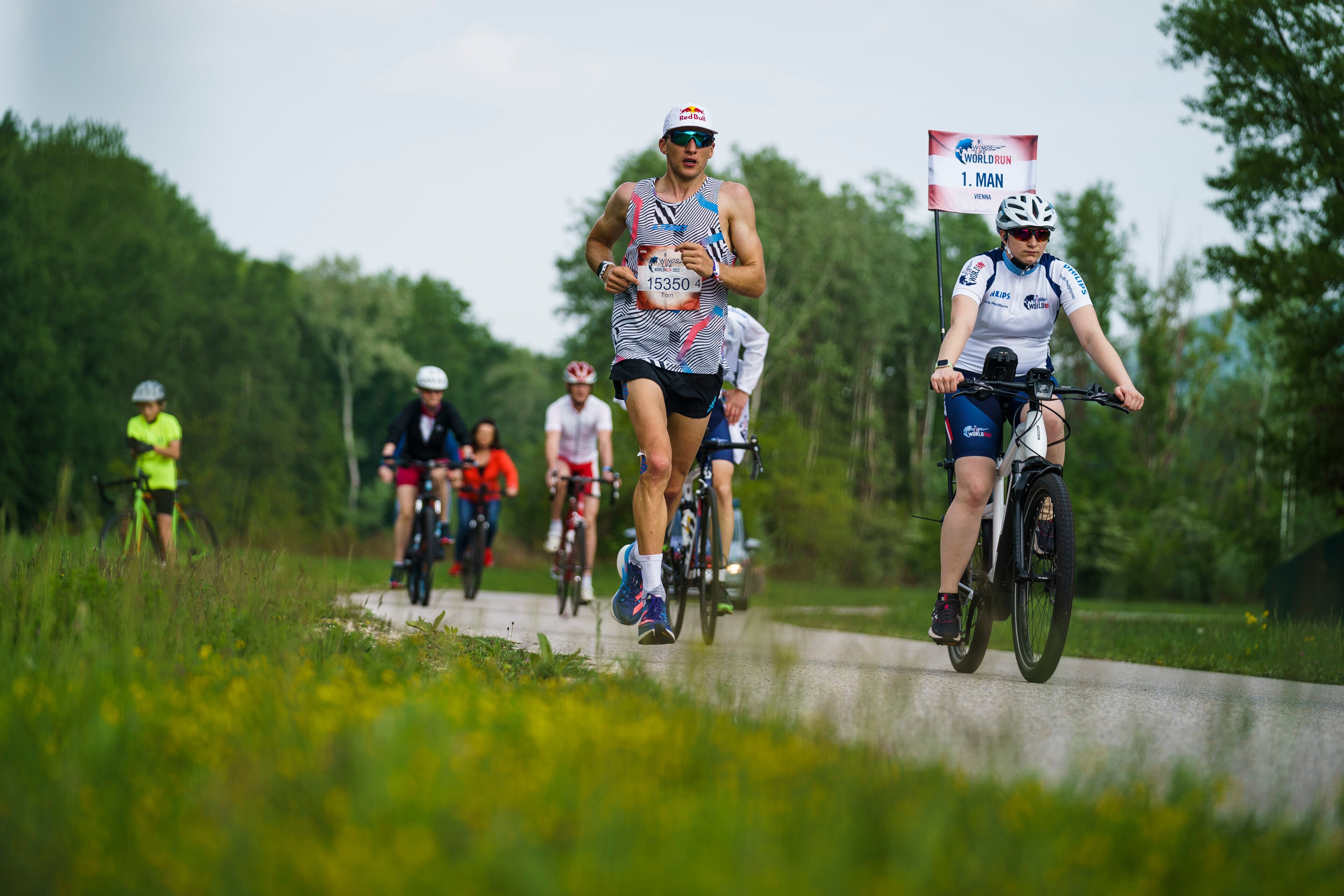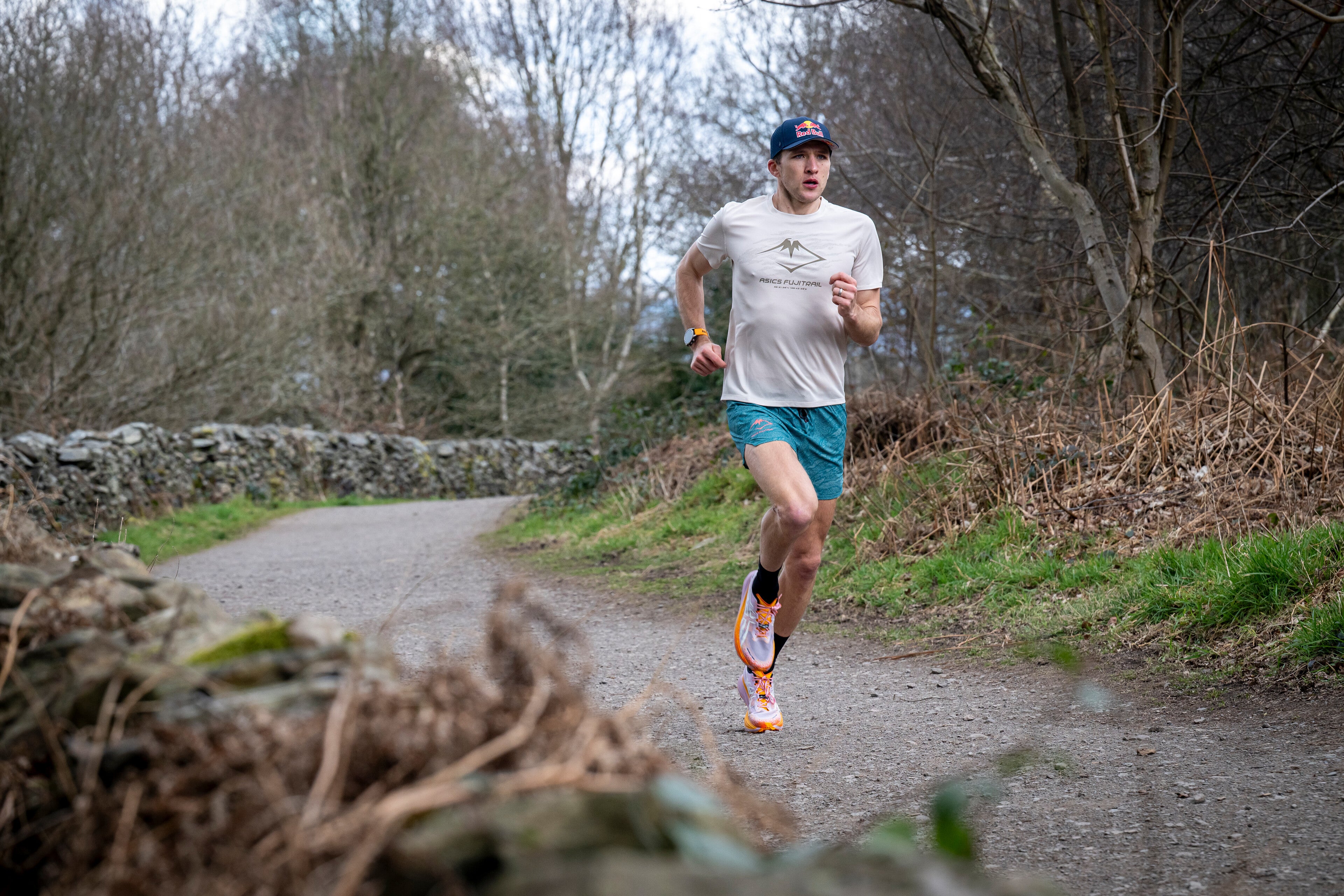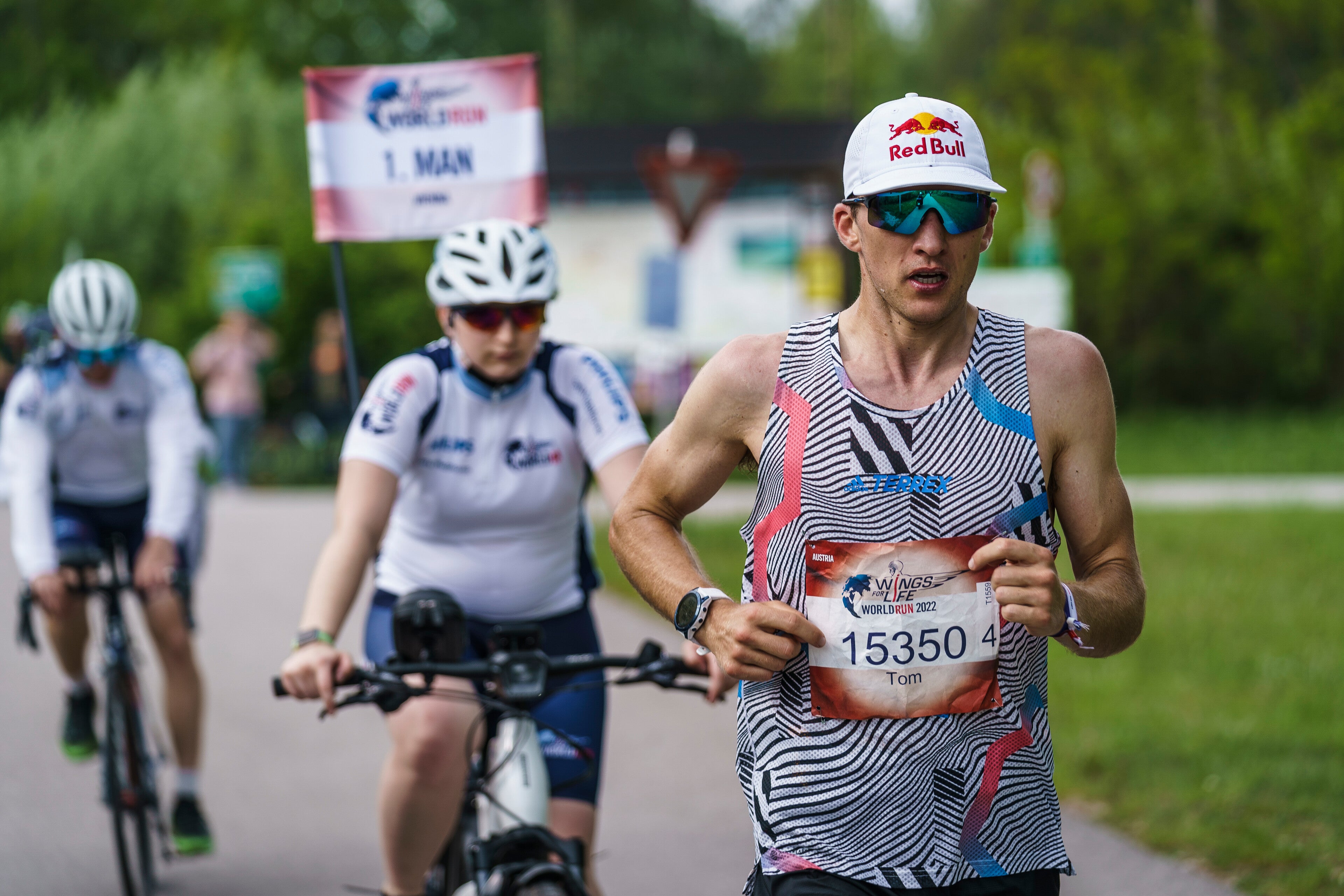
Have you ever been on the wrong end of a drunken bet? If so, chances are you wound up downing a pint, texting an ex or generally embarrassing yourself. It probably didn’t end with you standing on the podium of the Marathon Des Sables – a 251km multi-stage race across the Sahara Desert.
But that’s exactly what happened to Tom Evans in 2016. The then British Army captain was enjoying a tipple or two with friends who had just finished the race, when he drunkenly suggested he could beat their times – despite never having run more than 10km. Fast forward 10 months and he was good to his word, becoming the first non-sub Saharan male to finish in the top three.
In doing so, he stumbled across the centre of a Venn diagram comprising activities he loved and activities he happened to be incredibly good at. So, in 2019, the now 33-year-old left the army to become a full-time ultra runner, and now the Red Bull athlete regularly travells across the globe to compete against the sport’s elite.
Below he reveals the merits of traipsing around the Lake District's testing topography for five hours, and why the Ultra-Trail du Mont-Blanc remains his white whale.
Tom Evans’ training schedule
When someone quantifies their weekly running in hours rather than miles, you can be certain they run a lot. “It’s a very time-consuming hobby,” Evans laughs. “Now, I won’t really bother going for a run if it’s not at least 90 minutes. In a typical week I will be running for around 20 hours, and biking for about 10 hours.”
The pro runner’s week comprises a version of training every day – even his “rest” days include one of these minimum 90-minute runs. From Monday through to Sunday, Evans will be running. This is what his training schedule usually looks like.
Monday: ‘A recovery day of sorts’
“I don’t really take a full day off unless I really need to, but as a full-time athlete there is so much stuff I can be doing on a recovery day,” Evans says.
“I’ve started doing reformer Pilates fairly recently, so I do that once a week on a Monday – that’s a 90-minute session. Then I’ll go to the gym or I might jump on my bike for an hour, so even on a recovery day you’re still training for three to four hours.”
Tuesday: ‘Double threshold day’
“In the morning I’ll typically do something faster and flatter, like a fairly standard session for me is six by 2km,” says Evans.
“There’s a loop in Loughborough where I live called the 2km loop, and it’s where Paula Radcliffe did all of her training when she was up here. It’s not a beautiful run whatsoever, it goes through two different housing estates, but it’s as close to a closed road as you can get. You might see one car in a 70-minute session.
“Then in the evening, I’ll typically be on my treadmill doing something like 20x1min at threshold pace at an incline of 25 per cent, or something similar.”
Wednesday: ‘A long day on tired legs’
“I’ll drive up to the Peak District or the Lake District or Snowdon, then I’ll do somewhere between four and five hours, at a very easy pace, just [to practise] running on tired legs.”
Thursday: ‘Another recovery-ish day’
“This would typically involve a 90-minute run in the morning, then a longer ride in the afternoon – two or three hours on the bike.”
Friday: ‘Another double run day focussing on longer reps’
“I might do something like five to eight by 10 minutes uphill, at a marathon effort that’s still quite hard but sustainable,” he says. “And in the afternoon, because Friday is normally a double run day, I will go and run another 10-12km in the afternoon.”
Saturday and Sunday: ‘Long back to back days’
“Again, I’d go to the Lake District or the Peak District, then I’d do four hours on Saturday and four hours on Sunday,” Evans says. “Normally one of those days will have a bit of a session built into it, so maybe something like five by five minutes tempo or two rounds of 10 minutes at race pace, just to mix things up a little bit. And that wraps up a pretty standard week.”
Read more: A sports scientist reveals how to avoid a stitch while running

Tom Evans sample workout
Complete six rounds of the following sequence:
- Run 2km at threshold pace (3min/km for Evans, representing a 4:1 work:rest ratio)
- Rest 90 seconds
“I think it’s really important to train both faster and slower than you’re going to run on race day,” Evans says. This is an example of a shorter, faster session for him.
This might surprise some people, given his propensity for covering incredibly long distances. But there are surges within a race, particularly during the first kilometre, and it pays to keep pace with the front runners.
“For me, one of my strengths is being able to run at a 3min/km pace and have it not cost that much,” says Evans. “I know in a race, if I put a surge in that’s a little bit faster, people will keep up, but it will cost them far more than it will cost me. It might not break them immediately, but we probably still have five, six, 10 hours of racing to do, and eventually it will break them.”
Read more: 10 tips for running your first marathon from professionals who’ve gone the distance
The diet of an ultra runner
If we went through everything Evans ate in a week to support his colossal training load, we might be here a while. Instead, I pried into what his intra-workout nutrition looked like, and it’s certainly interesting.
“At the moment I’m working a little bit on body composition and trying to do a bit more fasted training and really optimise my body’s ability to burn fats,” he says.
“Having Red Bull Zero – something that has no calories in but still has 80mg of caffeine – is incredibly useful because it gives me the caffeine I need to fuel these fasted sessions while at the same time allowing my body to use fat reserves and the glycogen that’s already in my body.
“That doesn’t mean I don’t eat carbs at all. I probably do that [fasted training] once, maybe twice, a week. Then everything else is fuelled by between 100 and 120g of carbohydrate. To do that I’ll use a mixture of real food, sports drinks and normal full fat Red Bull.”
And how does one consume 100-plus grams of carbs while on the go? A potato sandwich of sorts, Evans says.
“For the fast races you can do it off gels and liquids, but in longer races like the Ultra-Trail du Mont-Blanc (UTMB – a 106-mile race through the Alps) I’m having real food as well.
“One of my favourite real foods would be a flatbread wrap with mashed potato or mashed sweet potato inside. You get a mixture of simple and complex carbohydrates, and it’s a great way to get tasty food that’s easily digestible at the same time.”
Read more: The three ‘essential’ kettlebell exercises for health and longevity, according to an expert strength coach

Avoiding the dreaded ‘red line’
With his high weekly running volume, Evans says he’s “constantly on the red line” as far as recovery and injury is concerned. For that reason, what he does away from the trails is just as important as what he does on them.
“I do my mobility and my activation stuff in the morning before training, but around that typically if I’m not training I’m not training, so I’ll sit on the sofa with my recovery boots on and basically just chill,” he says. “I think that’s one of the great things about being a professional athlete; you have the time to do those things.”
Evans will also incorporate strength training exercises into his week such as plyometrics and heavy weighted step-ups to strengthen the tissues in his lower limbs and “coach the body into recruiting as many muscle fibres as possible”.
“The more workers you have, the quicker the job can be done, so my strength work is very much on trying to recruit as many muscle fibres as possible,” he explains.
Sleep is another important tool in Evans’ recovery armoury, and thanks to his military background Evans says he can do it any time, anywhere – even while standing up on some occasions.
He aims for roughly 10 hours each night, leaving his phone outside the bedroom and donning a sleep mask to improve the quality of his slumber.
“I also try to have a nap every afternoon,” he adds. People say you should get eight hours of sleep per night, but I try to get an extra eight hours of napping over the course of a week. That’s a rule of thumb for me, and I’ve found it works quite well.”
However, when we spoke he was weeks away from becoming a father for the first time. His daughter Phoebe Evans arrived on May 13.
“I’m sure with a baby the napping is going to be a little bit more tricky, so I’m banking my sleep now and letting the interest run on it, although I’m told it doesn’t really work like that,” he jokes.
Read more: Will the run club replace the pub? Why choose when both can help fight a deeper issue?

What’s next for ultra runner Tom Evans?
The obvious answer to this question is fatherhood – a prospect Evans describes as “a cause for congratulations and also bloody terrifying at the same time”.
But speaking to him, it quickly becomes clear that he has unfinished business with one race in particular: the Ultra-Trail du Mont-Blanc.
“We’ll have a baby, and from there I’ll stay at home for a little bit,” he says. “Then I guess my big goal for this year is UTMB in Chamonix at the end of August.
“It’s been a race that’s eluded me so far. I’m very meticulous in race planning and race strategies, and a lot of the time I get it right. Whereas with this race I’ve never got it quite right.
“It’s definitely a big itch to scratch. I’m planning to have a better race this year, and I have a couple of new strategies that we will implement in the race and add into training to try and get the result I’m searching for.”
Read more: How endurance sports are taking India by storm: ‘It’s the feeling of being alive’







